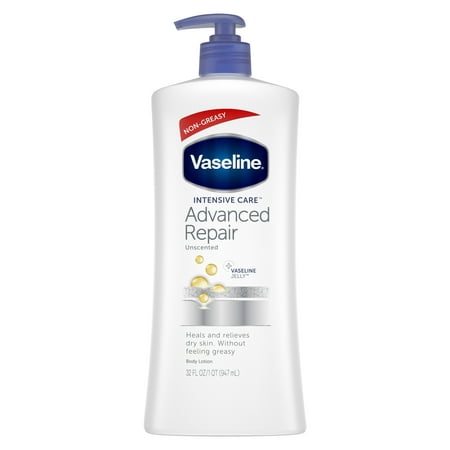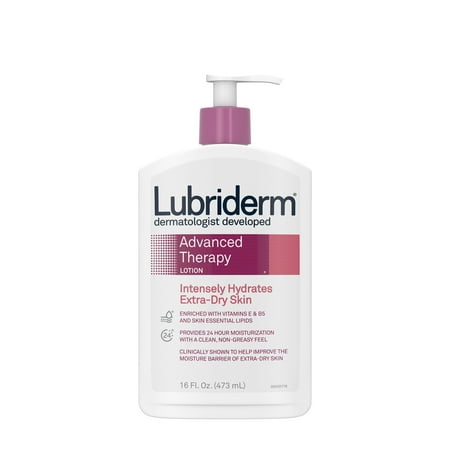Vaseline Intensive Care hand and body lotion Essential Healing 20.3 oz
Vaseline Intensive Care Essential Healing Body Lotion provides fast absorbing moisture to give you deeply moisturized, healthy skin. Clinically proven to keep dry skin healed for 3 weeks, after four weeks of daily use, its a body lotion you can count on. Deeply Moisturizing Lotion. The Vaseline Essential Healing Body Lotion moisturizes deep down to heal dry skin. Everyday, your skin is exposed to damaging environmental factors like extreme temperatures, low humidity, harsh cleansers, and hot water. Therefore, Vaseline moisturizing body lotions are designed to penetrate the outermost layer of the skin to heal dry skin for long periods of time, not just to provide temporary, superficial relief. Vaseline Intensive Care Essential Healing Body Lotion is formulated with a special blend of glycerin, to draw moisture to the skin, and micro-droplets of Vaseline Jelly, which is an effective dry skin moisturizer. Its deeply moisturizing formula provides effective, long-lasting skin hydration. Witch such nourishing ingredients, Vaseline Intensive Care Essential Healing Lotion is the perfect daily body lotion for maintaining smooth, soft skin. The non-greasy, fast absorbing formula relieves dry skin quickly by penetrating skin layers. This dry skin lotion is ideal for when you want to get on with your day. it absorbs quickly , so you can get dressed within minute of application. Experience the healing power of Vaseline with this body moisturizer, and watch as your dry skin is transformed and starts to feel smooth and silky.







Vaseline Intensive Care hand and body lotion Essential Healing 20.3 oz:Vaseline Intensive Care Essential Healing Hand and Body Lotion moisturizes dry skin and dry handsVaseline’,s Essential Healing Hand and Body Lotion is fast absorbing for a non-greasy feelContains micro droplets of Vaseline Jelly to lock in moistureClinically proven to moisturize deeply within the first application, for noticeably healthier looking skinMoisturizing hand and body lotion, clinically proven to keep dry skin healed for 3 weeks, as proven after 4 weeks daily useDaily hand and body lotion best for: dry skin, rough skin, dry hands from washing





Reviews
There are no reviews yet.